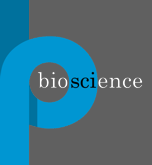How to Write a Nutrition Science Research Paper
In the world of nutrition science, research papers are the currency of knowledge. They offer a platform to explore, analyze, and contribute to the ever-evolving field of nutrition. Whether you're a student diving into the depths of this discipline or a seasoned professional aiming to communicate your insights, the art of crafting a compelling nutrition science research paper is essential. For students, this might also involve seeking an essay editor for students from https://premiumqualityessays.com/buy-editing/ to ensure the highest quality in their papers.
Essential Components of a Nutrition Science Research Paper
Title and Abstract
Your title is the first impression your paper makes. It should be clear, engaging, and indicative of the paper's focus. Titles like "The Impact of Antioxidants on Cellular Health" pique curiosity.
Abstracts provide a snapshot of your paper. Write a concise summary that encapsulates the study's purpose, methods, results, and conclusion. Effective abstracts are a compelling invitation to read further.
Introduction Section
The introduction is your opening statement. It sets the stage for your research by explaining why the topic is important and what questions your study addresses. Make it engaging, clear, and purposeful.
Literature Review
The literature review is the canvas on which your research is painted. It provides context by summarizing and analyzing previous research in your field. Ensure it's organized logically and explores relevant studies. Comprehensive literature searches are key to its success.
Methodology
This section is your recipe book. Describe the research methods and techniques you used clearly. The significance of a well-defined methodology cannot be overstated. It's the blueprint for your study, so take the time to ensure it's detailed and accurate.
Crafting a Strong Discussion and Conclusion
Analysis of Results
Data without context can be meaningless. Present your research findings clearly, using figures and tables when appropriate. Explain the meaning behind the numbers and what they reveal.
Discussion of Results
Your results should lead naturally into the discussion section. Address each result and its relevance to your research questions. Don't shy away from unexpected outcomes; discuss their implications, which can sometimes be more enlightening than expected ones.
Conclusion and Implications
The conclusion is your paper's grand finale. Summarize your key findings and restate their significance. Go a step further by suggesting practical implications and avenues for future research, revealing the broader impact of your work.
The Art of Citation and References
Citation Styles
Proper citation is the academic currency. Ensure you adhere to the required citation style (e.g., APA, MLA) consistently throughout your paper. Be meticulous in citing sources; it's a mark of respect to the work of others.
Reference Management Tools
Reference management software like EndNote or Mendeley can save time and ensure accuracy in citations and references. Learn how to use these tools effectively; they'll streamline your writing process.
The Revision and Proofreading Process
Editing and Proofreading
Effective proofreading is an essential part of the writing process. It ensures your paper is free of errors, enhancing its clarity and impact. Use tools like Grammarly for a preliminary check, but don't underestimate the value of manual proofreading.
Peer Review
Seeking peer review or feedback from your professors is invaluable. It offers fresh perspectives and helps refine your paper. Embrace constructive criticism and use it to enhance your work.
Resources for Nutrition Science Research
Academic Databases
Explore the vast world of academic databases like PubMed, Web of Science, and others. These repositories house a treasure trove of research papers and studies. Learn effective searching and filtering techniques to access the information you need.
Research Tools
Take advantage of software tools that aid data analysis, visualization, and manuscript preparation. Software like R, Tableau, and LaTeX can make your research more productive and efficient.
Conclusion
Crafting a compelling nutrition science research paper is a blend of science and art. In this guide, we've explored the essential components of a research paper, from the engaging title to a robust conclusion. Writing is an evolving process, so embrace revisions and peer review. Utilize the wealth of resources available, from academic databases to research tools, and let them empower your research journey.
